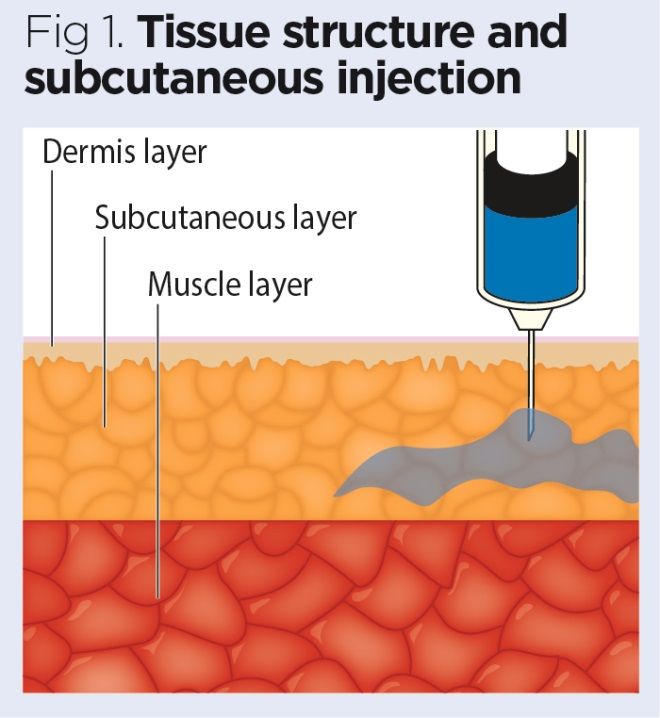Allergy Shots Sub Q

Allergy shots are a form of treatment called immunotherapy. Each allergy shot contains a tiny amount of the specific substance or substances that trigger your allergic reactions. These are called allergens. Allergy shots contain just enough allergens to stimulate your immune system — but not enough to cause a full-blown allergic reaction. Allergy Shots (Subcutaneous Immunotherapy) Allergy injections remain the cornerstone of Texas Ear, Nose & Throat Specialists’ immunotherapy program. This tried and true therapy works with your own body’s immune system to naturally desensitize you to your allergen triggers.
by Dr. Christopher Chang, last modified on8/8/17.
Read and comment below!
Allergy Shots Sub Q
Introduction
Allergy injections are NOT administered the same way that vaccines like flu shots or pediatric shot series are given. Allergy shots are given into the sub-cutaneous tissues and NOT the muscle like most vaccines. The subcutaneous tissue is the layer where the fat is... or the layer between the skin and muscle. This article attempts to instruct how one administers allergy shots correctly into the subcutaneous tissues.After understanding how to inject, instructions on the correct amount to be drawn up is given.
For more information, please contact our office to make an appoinment. Click here to download these instructions into printable pdf format.

STEP 1: After drawing up the appropriate amount of allergy serum, hold the syringe comfortably in your dominant hand. Visually confirm correct volume of serum drawn up and that there are no air bubbles present. Click on the picture for a larger view. |
STEP 2: The allergy shot is administered into the tricep region of the arm (back part of the upper arm). Pinch only the skin (excluding the muscle) between your thumb and index finger using your non-dominant hand. Pinching helps lift and isolate the subcutaneous tissues up and away from the muscle. Click on the picture for a larger view. |
STEP 3: Insert needle into the skin ONLY HALF THE LENGTH OF THE NEEDLE!!! Do NOT push the needle all the way in. Inject the serum. That's it! Click on the picture for a larger view. |
THE Note that the syringe was inserted to the hub and that the skin was not pinched prior to insertion. Most likely, the needle is in the muscle and there is an increased risk of anaphylaxis if given improperly like this. Click on the picture for a larger view. |
Wondering about whether gloves should be worn with allergy shots? Click here for more info.
Allergy shots are given using a 1cc syringe with a 25 gauge or higher needle. The amounts injected are miniscule and may be confusing for an individual (even for non-allergy physicians and nurses). At least in our practice, the amounts administered are as follows: 0.025 cc, 0.05 cc, 0.10 cc, 0.20 cc, and 0.25 cc. Here are the photos depicting each of these amounts. Click on the picture for a magnified view.
Amount: 0.025 cc |
Amount: 0.10 cc |
Amount: 0.25 cc |

Are Allergy Shots Sub Q Or Im
Please enable JavaScript to view the comments powered by Disqus.

Are Allergy Shots Given Sub Q
We are starting to get more and more questions about this topic in our clinic – probably due to the numerous ENT surgeons and family practice doctors in the community that are prescribing and advertising “allergy drops”. Allergy drops (or more appropriately sublingual immunotherapy – SLIT) are mixtures of allergens that are placed under the tongue for treatment of symptoms related to environmental allergies. SLIT has been used for years in Europe and is becoming more popular in the United States, particularly with primary care physicians and ENT surgeons. There are also two FDA approved sublingual products – Grasstek and Ragwitek, both manufactured by Merck. These two products have not been extensively used in our area.
Allergy shots (or subcutaneous immunotherapy – SCIT) have been and continue to be the most popular form of allergy treatment in the United States. Allergy shots involve the administration of specified amounts of allergens in a small shot under the skin. These are typically administered once weekly for a specified period (usually about a year) and then spaced out to every 2‐4 weeks.
So, let’s take a look at the differences between SLIT & SCIT:
So from this, the biggest advantage of allergy drops is the convenience factor. There are three big disadvantages of drops: 1) there is no published data that gives a dose range and schedule for each allergen, 2) there is no data that suggests that lifelong tolerance ever develops from allergy drops (i.e. you may be on them for the rest of your life), and 3) current studies do not suggest that they are effective in patients allergic to more than one allergen (90+% of our allergic patients have >1 allergen sensitivity).

Allergy drops are typically made using the same FDA approved allergen extracts used to make allergy shots. However while these extracts are FDA approved for injection under the skin, they are not approved for oral use. The major problem with this is that a non‐FDA approved product will not be paid for by insurance. Though allergy drops are typically cheaper than allergy shots, many insurances will pay some or all of the cost for allergy shots.
In conclusion, with the research we now have, it appears that allergy shots are, on the whole, the better choice for most people. The potential for development of lifelong tolerance after 4‐5 years is an exciting prospect that we have not seen with allergy drops. So essentially, we are weighing convenience versus potential for permanent cure. We here at HAAC do have some patients on allergy drops and we feel that they may be the right choice for certain patients. As a whole, however, most of our patients opt for allergy shots for the reasons listed above.
Come in for an appointment and let us go over the benefits and disadvantages of each!